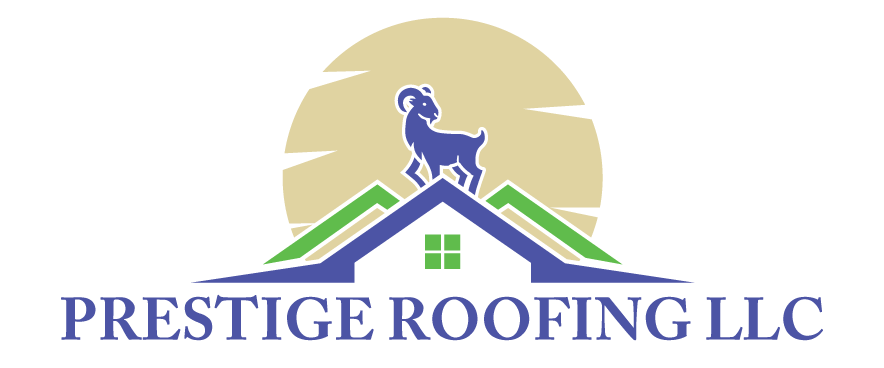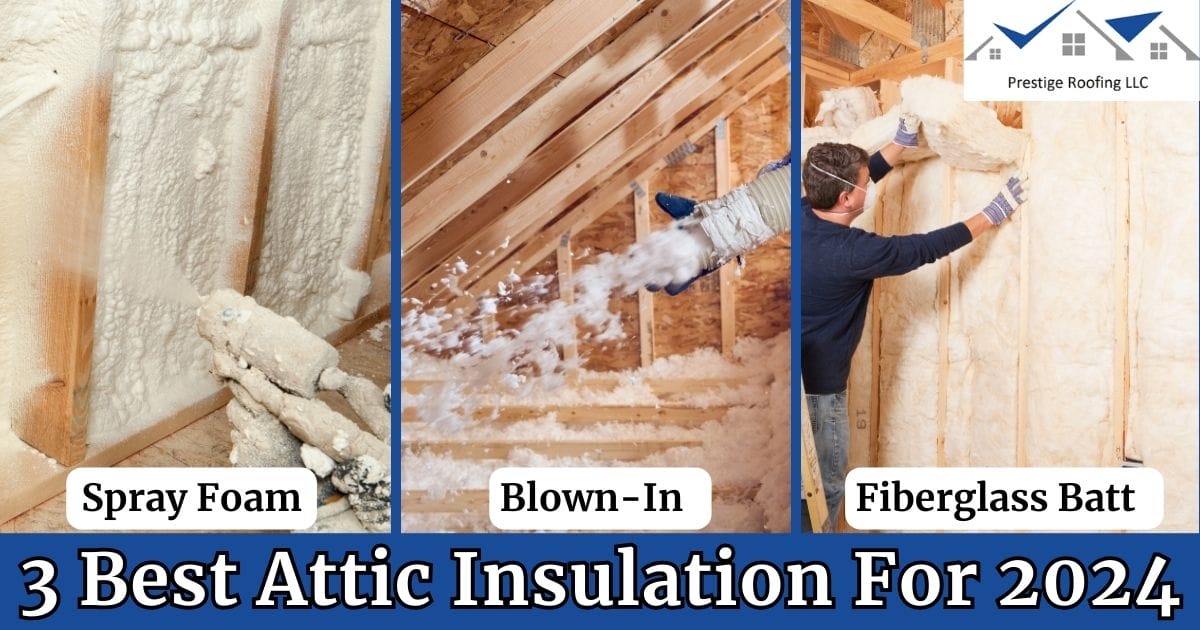Any energy-efficient home must have adequate attic insulation. It helps preserve a comfortable temperature all year round and lowers energy consumption along with your heating and cooling expenses. However, it can be difficult to choose the right insulation for your attic when there are so many options available.
This blog post will cover in detail the three best attic insulation choices for 2025, along with their advantages and disadvantages.
What Is The Best Attic Insulation To Use In 2025?
Ultimately, the best attic insulation will be different for each homeowner based on their needs and budget.
1. Spray Foam Insulation
R-Value: R-3.6 to R-7 per inch depending on the type
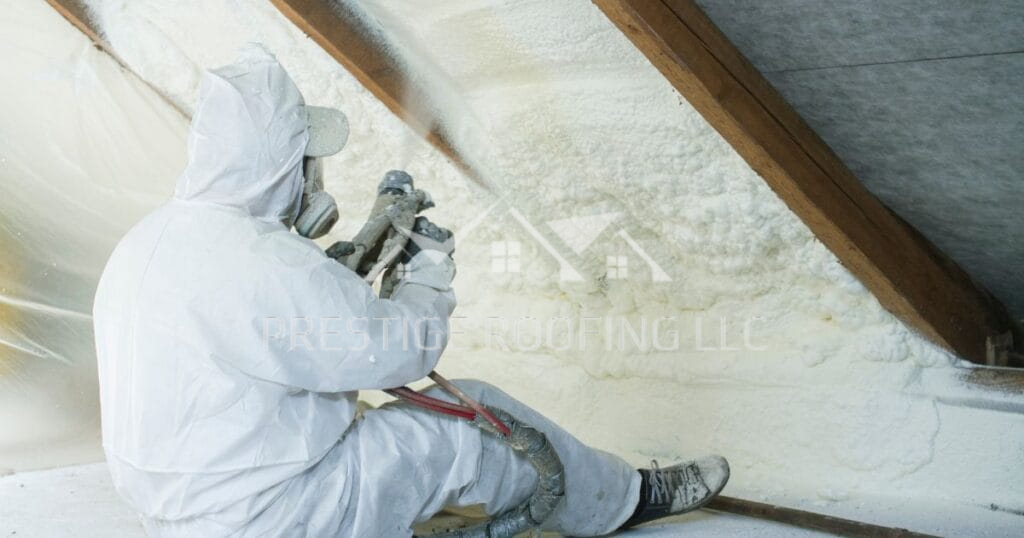
Spray foam insulation can be applied in various ways because it turns from liquid to foam when used. Open-cell spray foam isolates sound, but closed-cell spray foam is superior at stopping heat transfer and water damage. It’s versatile and can be used in attics, walls, basements, and floors in both residential and commercial settings.
Pros
- Versatile: Applicable for roofs, lofts, walls, floors, and more
- High R-Value: Offers significant thermal resistance
- Moisture Barrier: Guards against moisture damage
- Structural Support: Supports older buildings
- Energy Savings: Can significantly reduce energy bills, offering savings of 30% to 50% compared to other options
- Healthier and Safer: Provides better air quality and fire protection than traditional materials
- Easy to Install: Pros can get it done quickly and efficiently
Cons
- High Cost: Generally pricier than other types of insulation
- Structural Risks: Poor installation can cause ventilation blocks and condensation
- Removal Difficulty: Challenging to remove in order to install new insulation
- Limited Soundproofing: Less effective than alternatives like mineral wool
- Health Risks: Poor installation can lead to respiratory issues due to chemicals
Cost: $1 to $4 per square foot
2. Blown-In Insulation
R-Value: R-3 to R-4 per inch
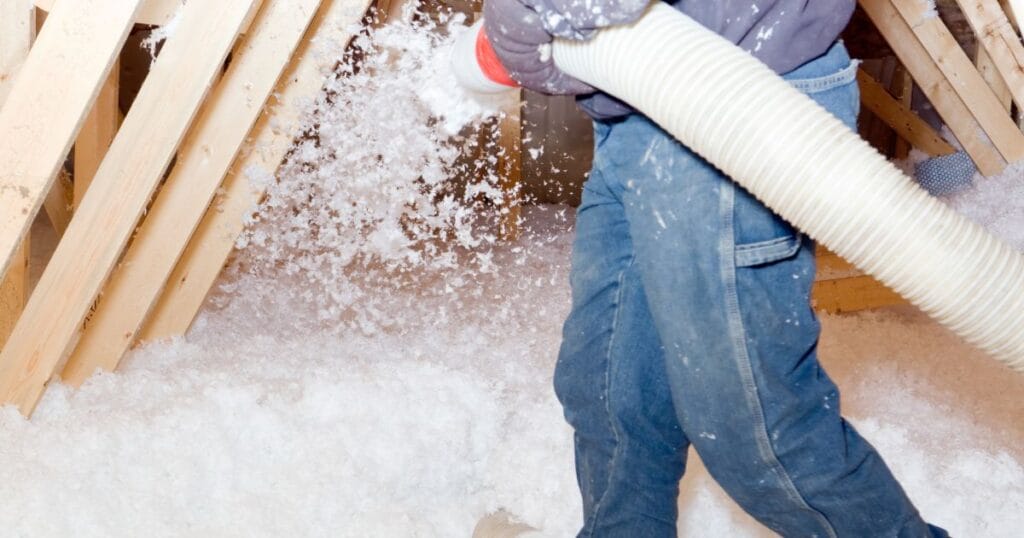
An adaptable and affordable substitute for spray foam insulation is blown-in insulation, commonly referred to as loose-fill insulation. Using specialized machinery, it is made up of evenly distributed tiny insulating fibers or particles, such as cellulose or fiberglass. It reduces heat transfer by filling gaps found in walls, attics, and other places.
One of its primary benefits is that it provides uniform coverage, even in hard-to-reach areas, which reduces labor costs and installation time. Blown-in insulation also provides increased comfort, reduced heating and cooling costs, and increased energy efficiency. It provides a useful, flexible solution for a range of building types by efficiently filling cavities and adding insulation to hard-to-reach areas, whether made of fiberglass or cellulose.
Pros
- Eco-Friendly: Blown-in insulation mainly uses recycled materials like cellulose and fiberglass, making it environmentally friendly
- Ideal for Irregular Spaces: It fits well into oddly shaped areas, providing better insulation coverage
- Improved R-Value: Blown-in insulation boosts your home’s thermal efficiency, helping to reduce heating bills
- Fire-Resistant: Cellulose insulation is fire-resistant, enhancing home safety
- Pest-Resistant: Treated with borate, this insulation repels pests, preventing attic infestations
Cons
- Chemical Treatment: Borate, while effective against pests, compromises the material’s eco-friendly status
- Settling Over Time: Blown-in insulation may settle, reducing its thermal resistance over time
- Professional Installation: Blown-in insulation requires a professional for its installation due to the need for specialized equipment, which increases costs
- Water Retention: Blown-in insulation, with high fiberglass content, can hold water, leading to mold and a reduced R-value until it dries.
- Expensive: With professional installation necessary, the overall cost can be more expensive
Cost: $0.50 to $4 per square foot
3. Fiberglass Batt Insulation
R-Value: R-2.9 to R-3.8 per inch
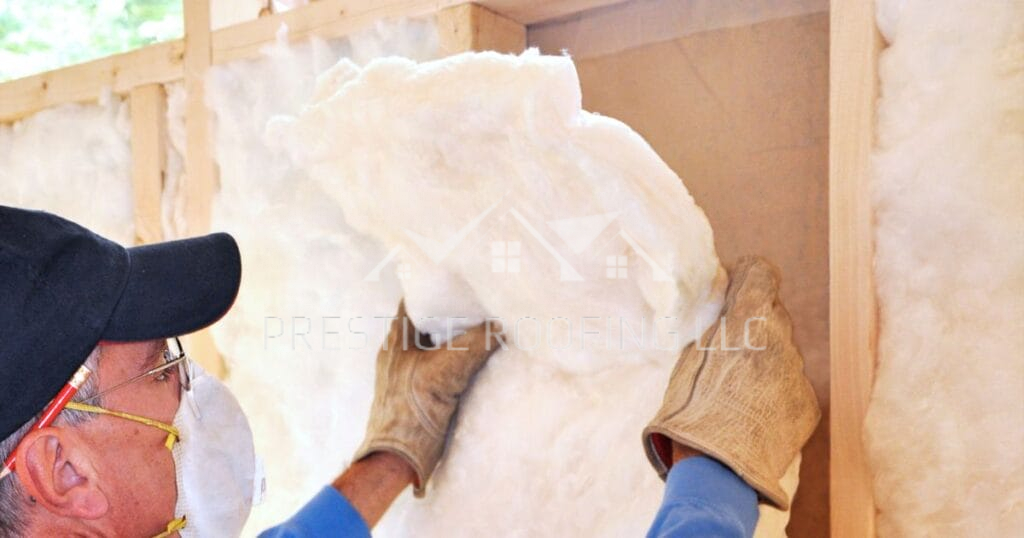
Fiberglass insulation, whether in batt or roll form, is popular for insulating residential and commercial spaces. It is made from tightly woven glass fibers and a binder to provide effective thermal and acoustic insulation. It is widely used due to its affordability compared to alternatives like cellulose or spray foam, and its ability to resist heat flow.
Easy to handle and install, it fits snugly between rafters, joists, and studs, often in pre-cut pieces for convenience. Additionally, fiberglass insulation is known for its resistance to both fire and moisture, making it suitable for roofs, attics, and walls. Nevertheless, its ability to block sound and adapt to different needs makes it a practical, as well as cost-effective, solution for improving energy efficiency and soundproofing buildings.
Pros
- Cost-Effective: Fiberglass batts are budget-friendly, and ideal if you’re looking to save money on insulation projects
- Easy Installation: Pre-cut batts simplify DIY projects, fitting standard joist widths effortlessly
- Moisture Resistance: Resists moisture, making it suitable for humid areas
- Noncombustible: Offers safety as it is non-combustible
- Renewable Material: Nearly half of the material can be recycled, promoting sustainability.
Cons
- Performance Concerns: Prone to gap and sagging, affecting long-term performance
- Shorter Lifespan: Lifespan is shorter compared to other insulation types
- Skin Irritation: Handling this insulation without protection can cause skin and respiratory problems
- Susceptibility to Moisture: Loses effectiveness when wet, whether from direct exposure or condensation
- Tricky Installation: It is challenging to fit into small, irregular spaces, which may lead to gaps
- Pest Attraction: Attracts rodents and pests seeking nesting spots
Cost: $.70 to $3 per square foot
What Is Better For Attic Insulation: DIY Or Professional Installation?
Although DIY installation may seem more affordable, getting professional help is usually better. Expertise from professional contractors ensures accurate assessment and appropriate recommendations regarding the type of insulation you need. Their expert installation saves time and effort while reducing safety risks and energy inefficiency for different roof parts and materials. They may also have the ability to provide warranties, which gives customers confidence in a product’s long-term functionality. In general, expert assistance guarantees the best insulation and significant long-term energy savings.
Conclusion
Attic insulation is an essential component of energy-efficient homes, keeping interior temperatures comfortable and lowering utility bills. In 2025, homeowners will have plenty of options to choose from, each with pros and cons of their own. That is why choosing the correct insulation is essential to maximizing energy efficiency.
Prestige Roofing is recognized as a reliable source of quality roofing services and is well-known for its constant commitment to customer satisfaction and quality. To give your home the makeover it deserves, contact us at (920) 791-0414.
